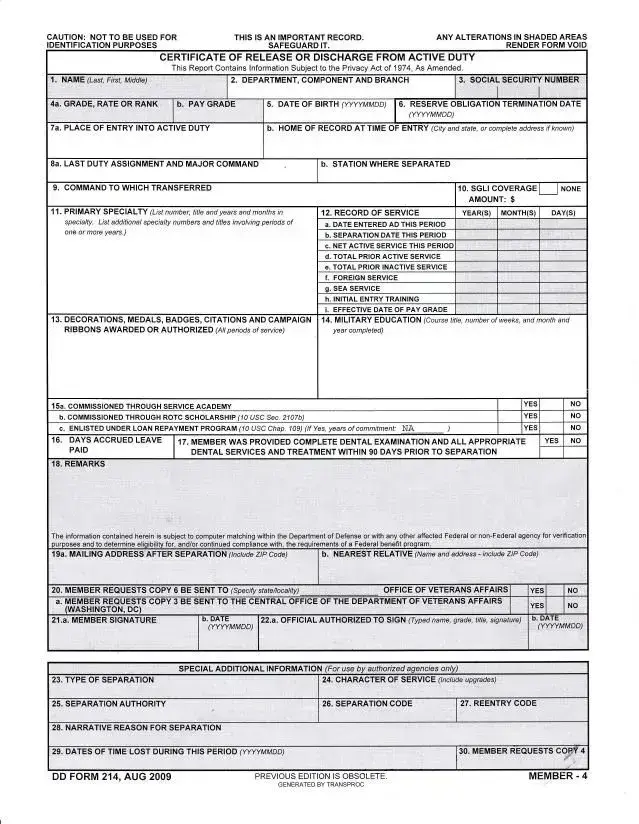The DD Form 214, officially titled "Certificate of Release or Discharge from Active Duty," is a document issued by the Department of Defense upon a military service member's retirement, separation, or discharge from active-duty military. It summarizes the service member's time in the military, including their service dates, branch of service, final duty status, and reason for discharge, among other details.
This form serves as a key document for veterans, proving their military service and the conditions under which they were discharged. Its importance spans various aspects of a veteran's life post-service, including eligibility for veterans' benefits, employment opportunities, education, VA loan applications, and membership in veterans' organizations. It is crucial for accessing the entitlements and recognitions deserved by those who have served.
To obtain a copy of a DD Form 214, veterans or their next of kin have several options:
-
Request through the National Personnel Records Center (NPRC) via their online eVetRecs system or by mail.
-
Visit the NPRC in person if immediate access to the document is necessary.
-
Contact the veteran’s last unit of assignment if the discharge was recent, as they may still have access to the form.
-
Request assistance from a local Veterans Service Office.
It's advisable to keep multiple copies in a safe place due to its significance.
Yes, the DD Form 214 comes in several copies, each with its specific purpose. The Member 4 copy is most often requested as it includes the type of separation and character of service. Other copies are provided to the veteran or designated agencies, containing varying levels of detail for different uses.
The DD Form 214 contains several pieces of critical information about a veteran's service, including:
-
Service member's personal information (name, social security number, date of birth).
-
Information related to the service member’s duty (dates of service, branch, rank, pay grade, and location of entry).
-
Details of separation or discharge (type, authority, reason, and character).
-
Awards, decorations, and education received during service.
-
Other service-specific information, such as foreign or sea service, total active duty time, and record of service.
If a veteran finds an error on their DD Form 214, corrections can be requested through the following steps:
-
Completing a DD Form 149, Application for Correction of Military Record, available through the Department of Defense.
-
Submitting the completed form to the relevant service branch’s correction board.
-
Providing supporting documentation that justifies the requested correction.
This process can address mistakes or omissions regarding dates of service, awards, and other critical service details.
Yes, family members, specifically next of kin, can request a copy of a veteran's DD Form 214. Next of kin includes the veteran's spouse, parents, siblings, or children. The request can be made for various reasons, including genealogy research, applying for benefits, or arranging for military funeral honors. Proper authorization or proof of death is required for such requests.
The DD Form 214 is indispensable for veterans reintegrating into civilian life. It is often requested by employers, especially those wishing to verify military service or consider veterans for employment preferences. Additionally, it is used to apply for government benefits, educational programs, and VA loans, making it a cornerstone document for veterans transitioning to post-military life.

